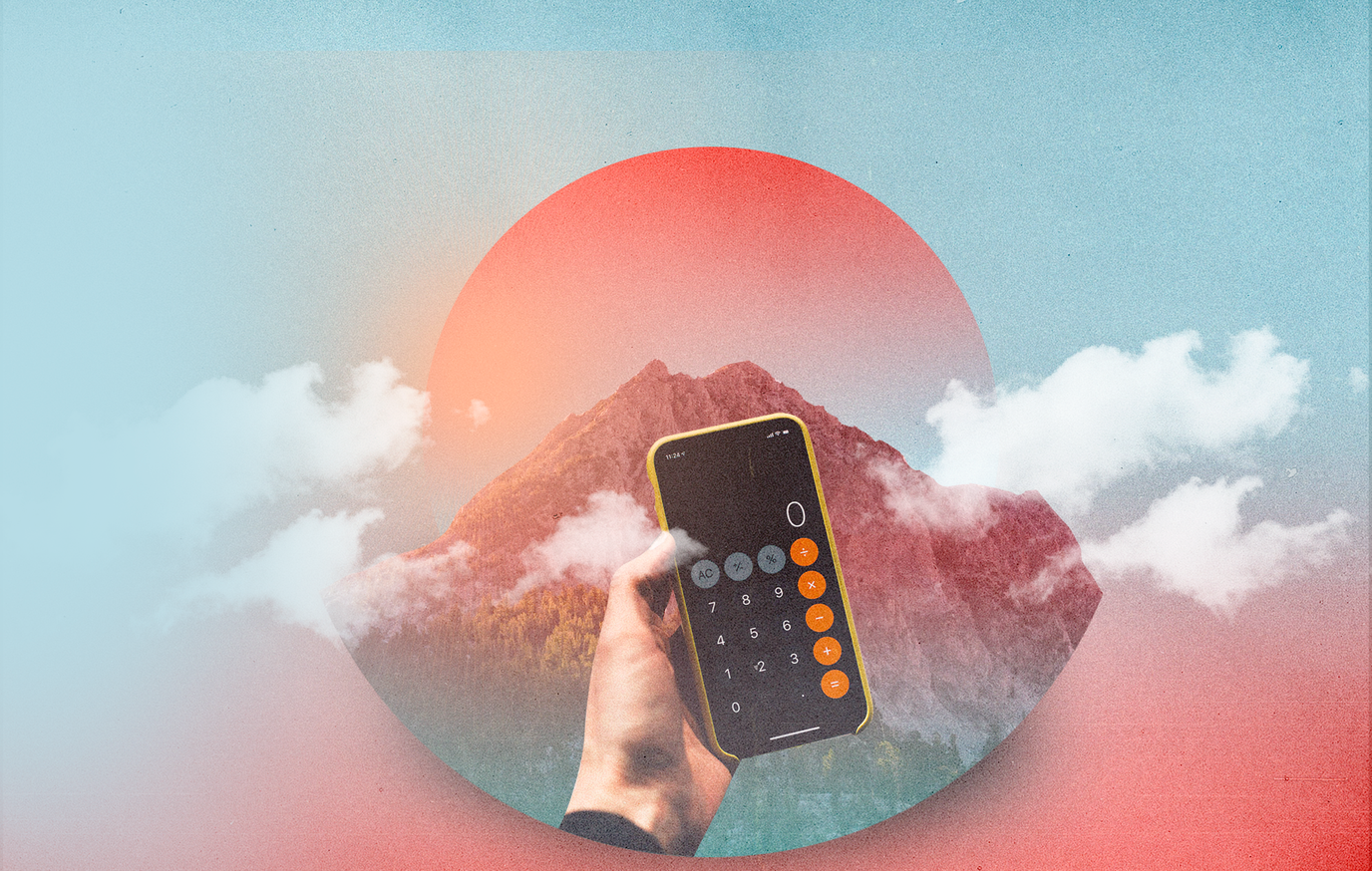If you're reading this while secretly calculating whether you have enough money to last until your next payday, you're definitely not alone.
Living paycheque to paycheque has become the reality for way too many Canadians. And we're not just talking about minimum wage workers here. We're talking about people with decent jobs, university degrees, and what should be comfortable salaries.
So what's going on? Why are so many of us stuck in this exhausting cycle of financial stress?
The numbers paint a tough picture
The statistics are pretty eye-opening. Nearly half of Canadians report that rising prices are greatly impacting their ability to meet day-to-day expenses. That's a huge jump from just two years ago when it was about one-third of people feeling this squeeze.
But here's what makes it even more concerning. This isn't just affecting people in entry-level positions. Young adults are getting hit especially hard, with over half of people aged 25 to 44 saying that rising prices are seriously affecting their ability to handle daily expenses.
Something is seriously wrong with this picture.
Rising costs are crushing family budgets
Let's start with the obvious culprit: everything costs more than it used to. A lot more.
Remember when you could fill up your gas tank without having a minor panic attack? Those days feel like ancient history now. Groceries that used to be manageable are now major budget items. Your morning coffee has somehow turned into a luxury purchase.
The impact isn't spread evenly either. People in lower income groups are feeling it the most. Nearly 6 in 10 people in the lowest income bracket say rising prices are greatly affecting their ability to meet daily expenses calcivilrights.ca.gov.
Housing: the budget destroyer
Housing costs are absolutely crushing Canadian families. Whether you're renting or trying to buy, housing is probably eating up way more of your income than it should.
Nearly 4 in 10 Canadians are very concerned about their ability to afford housing or rent because of rising housing prices. That's up from 3 in 10 just two years ago.
The situation is especially brutal for renters. About 6 in 10 renters across most income levels report being very concerned about housing affordability. Compare that to homeowners, where about one-third share the same level of concern.
Young Canadians are feeling this pressure intensely. Over half of people aged 15 to 34 are very concerned about housing affordability. When you're starting your career and trying to build a life, having housing costs consume most of your income makes financial stability nearly impossible.
The food squeeze
Food costs have been a major source of financial strain since 2021. More than one in five Canadians expect their household might need to get food or meals from community organizations over the next six months.
This isn't just affecting the lowest income families either. People across different income levels are expecting to rely on food banks and community support. That tells you how widespread the affordability crisis has become.
Young Canadians are getting hit hard
The data shows that younger adults are struggling more financially than older Canadians. Over half of people aged 25 to 44 report that rising prices are greatly affecting their ability to meet day-to-day expenses.
Young households are actually pulling back from the housing market. Recent data shows that households where the primary earner is under 35 were the only age group to reduce their mortgage balances, even while total mortgage debt grew across other age groups.
This suggests young families are either choosing not to enter the housing market, paying off debt faster, or downsizing to more affordable places.
But here's the catch. Even though young households have reduced their debt-to-income ratios, their debt servicing costs have shot up. Young households are now spending about 10 cents of every dollar they earn just on servicing their debt, up from around 7 cents just a year earlier.
Families with kids face extra pressure
Households with children are experiencing greater financial difficulty than other household types. Over half of families with kids report that rising prices are greatly affecting their ability to meet daily expenses.
This makes sense when you think about it. Kids need stuff. They need clothes, food, activities, childcare, and education expenses. When the cost of everything goes up, families with children feel it multiplied.
Just over one-quarter of households with children expect they might need to get food or meals from community organizations in the coming months. That's higher than households without children.
People with disabilities face additional challenges
Canadians with disabilities are consistently more likely to report financial concerns across the board. Over half of people with disabilities say rising prices are greatly affecting their ability to meet day-to-day expenses.
This group also faces higher rates of concern about housing affordability and expects greater reliance on community food programs. When you consider that people with disabilities often have lower employment rates and additional living expenses, it's clear why financial pressures hit this community particularly hard.
Debt is eating away at financial security
Canada has the highest household debt-to-disposable income ratio in the G7 at 185%, compared to an average of 125% for all G7 countries. That's a sobering statistic.
For young Canadians trying to build wealth, housing has traditionally been crucial. Real estate represents about 89% of total wealth for households under 35. But as young people pull back from the housing market due to affordability issues, they're missing out on this key wealth-building opportunity.
This creates a concerning cycle. Without access to homeownership and wealth building, it becomes even harder to achieve financial stability and break out of the paycheque-to-paycheque lifestyle.
The wealth gap is growing
Research shows that down-payment gifts from family have become increasingly important for first-time home buyers. The share of first-time buyers getting help from family jumped from 20% in 2015 to just under 30% in 2021. The average gift amount rose from $52,000 to $82,000 during that same period.
This creates a troubling divide. Young people with family financial support can access homeownership and wealth building. Those without family help get left behind, potentially contributing to growing inequality.
Financial stress affects quality of life
The constant worry about money takes a real toll. More than one-third of Canadians describe most days as quite stressful or extremely stressful due to financial issues.
This stress doesn't just affect your bank account. It impacts your overall well-being. Among people who describe most days as very financially stressful, only about one in five report having high life satisfaction. Compare that to nearly three-quarters of people without daily financial stress who report high life satisfaction.
Financial stress also affects people's outlook on the future. Nearly three-quarters of people without financial stress have a hopeful view of the future, compared to just over one-third of those dealing with significant financial stress.
The perfect storm
What we're seeing is really a perfect storm of factors that make it incredibly difficult for many Canadians to get ahead financially:
Rising costs for essentials like housing and food. Wages that haven't kept pace with inflation. High levels of household debt. Limited access to wealth-building opportunities like homeownership for younger people. And the psychological toll of constant financial stress.
These factors feed into each other, creating a cycle that's hard to break out of.
Breaking the cycle
So what can you do if you're stuck in this situation? The research shows that certain groups are particularly vulnerable, but there are still strategies that can help.
Start with a realistic look at your biggest expenses. For most people, that's housing and food. Are there ways to reduce these costs, even temporarily?
If you're young and priced out of homeownership, focus on building other forms of wealth and improving your financial literacy. The housing market won't stay unaffordable forever.
Look for ways to increase your income, whether through skills development, side work, or career advancement. In today's economy, sometimes one income stream isn't enough.
Build whatever emergency fund you can, even if it's small. Having any buffer helps break the cycle of using credit for unexpected expenses.
The bigger picture
Individual action is important, but the research makes it clear that this isn't just a personal responsibility issue. When nearly half of Canadians are struggling to meet daily expenses, that points to systemic problems.
We need policy solutions that address housing affordability, wage growth, and the rising cost of living. We need better support for vulnerable groups like young families, people with disabilities, and households with children.
Until we address these bigger structural issues, many hard working Canadians will continue to struggle financially despite their best efforts.
You're not alone
If you're living paycheque to paycheque, the data shows you're part of the majority, not a small minority. Financial stress is incredibly common in Canada right now.
That doesn't make it easier, but it does mean you shouldn't blame yourself entirely. You're dealing with economic forces that are much bigger than your individual circumstances.
Take control where you can. Build better money habits. Look for ways to increase income or decrease expenses. But also remember that you're navigating a challenging economic environment that's making financial stability harder for most people.
Start small, be patient with yourself, and remember that every positive step forward matters.

About the author
Quan works as a Junior SEO Specialist, helping websites grow through organic search. He loves the world of finance and investing. When he’s not working, he stays active at the gym, trains Muay Thai, plays soccer, and goes swimming.
Read more about this author